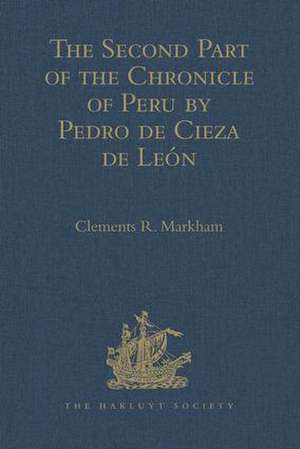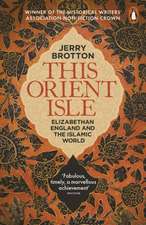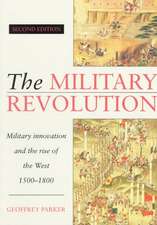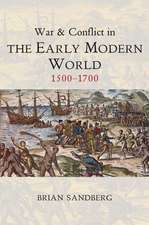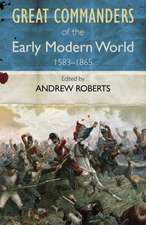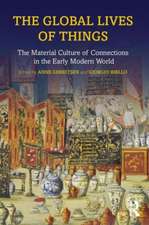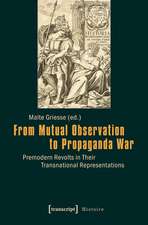The Second Part of the Chronicle of Peru by Pedro de Cieza de León: Hakluyt Society, First Series
Editat de Clements R. Markhamen Limba Engleză Hardback – 28 iul 2010
Din seria Hakluyt Society, First Series
- 9%
 Preț: 934.96 lei
Preț: 934.96 lei - 15%
 Preț: 669.94 lei
Preț: 669.94 lei - 9%
 Preț: 936.26 lei
Preț: 936.26 lei - 9%
 Preț: 939.31 lei
Preț: 939.31 lei - 9%
 Preț: 934.96 lei
Preț: 934.96 lei -
 Preț: 281.27 lei
Preț: 281.27 lei - 9%
 Preț: 934.96 lei
Preț: 934.96 lei -
 Preț: 298.02 lei
Preț: 298.02 lei - 9%
 Preț: 934.96 lei
Preț: 934.96 lei - 9%
 Preț: 934.96 lei
Preț: 934.96 lei - 9%
 Preț: 934.96 lei
Preț: 934.96 lei - 9%
 Preț: 940.39 lei
Preț: 940.39 lei - 9%
 Preț: 866.38 lei
Preț: 866.38 lei - 9%
 Preț: 934.96 lei
Preț: 934.96 lei - 9%
 Preț: 934.96 lei
Preț: 934.96 lei - 9%
 Preț: 934.96 lei
Preț: 934.96 lei - 9%
 Preț: 934.96 lei
Preț: 934.96 lei - 9%
 Preț: 934.96 lei
Preț: 934.96 lei -
 Preț: 281.27 lei
Preț: 281.27 lei - 9%
 Preț: 939.09 lei
Preț: 939.09 lei - 9%
 Preț: 936.03 lei
Preț: 936.03 lei - 9%
 Preț: 934.96 lei
Preț: 934.96 lei - 9%
 Preț: 934.96 lei
Preț: 934.96 lei -
 Preț: 281.27 lei
Preț: 281.27 lei -
 Preț: 296.35 lei
Preț: 296.35 lei - 9%
 Preț: 934.96 lei
Preț: 934.96 lei - 9%
 Preț: 605.72 lei
Preț: 605.72 lei - 9%
 Preț: 934.96 lei
Preț: 934.96 lei -
 Preț: 296.35 lei
Preț: 296.35 lei - 9%
 Preț: 934.96 lei
Preț: 934.96 lei - 9%
 Preț: 934.96 lei
Preț: 934.96 lei - 9%
 Preț: 934.96 lei
Preț: 934.96 lei - 9%
 Preț: 934.96 lei
Preț: 934.96 lei - 9%
 Preț: 934.96 lei
Preț: 934.96 lei - 9%
 Preț: 935.82 lei
Preț: 935.82 lei - 9%
 Preț: 934.96 lei
Preț: 934.96 lei - 9%
 Preț: 934.96 lei
Preț: 934.96 lei - 9%
 Preț: 934.96 lei
Preț: 934.96 lei - 9%
 Preț: 934.96 lei
Preț: 934.96 lei - 9%
 Preț: 934.96 lei
Preț: 934.96 lei - 9%
 Preț: 936.71 lei
Preț: 936.71 lei - 9%
 Preț: 934.96 lei
Preț: 934.96 lei - 9%
 Preț: 936.47 lei
Preț: 936.47 lei - 9%
 Preț: 934.96 lei
Preț: 934.96 lei - 9%
 Preț: 938.88 lei
Preț: 938.88 lei
Preț: 934.96 lei
Preț vechi: 1027.43 lei
-9% Nou
Puncte Express: 1402
Preț estimativ în valută:
178.92€ • 194.29$ • 150.30£
178.92€ • 194.29$ • 150.30£
Carte tipărită la comandă
Livrare economică 22 aprilie-06 mai
Preluare comenzi: 021 569.72.76
Specificații
ISBN-13: 9781409413356
ISBN-10: 1409413357
Pagini: 312
Dimensiuni: 156 x 234 mm
Greutate: 0.45 kg
Ediția:1
Editura: Taylor & Francis
Colecția Routledge
Seria Hakluyt Society, First Series
Locul publicării:Oxford, United Kingdom
ISBN-10: 1409413357
Pagini: 312
Dimensiuni: 156 x 234 mm
Greutate: 0.45 kg
Ediția:1
Editura: Taylor & Francis
Colecția Routledge
Seria Hakluyt Society, First Series
Locul publicării:Oxford, United Kingdom
Cuprins
Dedication to General Caceres, Introduction, Fragment of Chapter III, Chap. IV.–Which treats of what the Indians of this kingdom say touching the state of things before the Incas were known, and how they had fortresses in the hills, whence they came forth to make war one with another, Chap. V.–Touching what these natives say concerning the Ticiviracocha; of the opinion held by some that an Apostle passed through this land, and of the temple there is in Cáchan; also what happened there, Chap. VI.–How certain men and women appeared in Pacarec Tampu, and what they relate touching their proceedings after they came forth from there, Chap. VII.–How the brothers, being in Tampu-Quiru, beheld him whom they had shut up in the cave by deceit, come forth with wings; and how he told them that he went to found the great city of Cuzco; and how they departed from Tampu-Quiru, Chap. VIII.–How Manco Capac, when he saw that his brothers had been turned into stones, went to a valley where he met some people; and how he founded and built the ancient and very rich city of Cuzco, which was the capital of the whole empire of the Incas, Chap.IX.–In which notice is given to the reader of the reason that the author, leaving the account of the succession of the kings, prefers to explain the government of the people, their laws, and customs, Chap. X.–How the lord, after he had assumed the fringe of sovereignty, was married to his sister the Coya, which is the name of the Queen, and how it was permitted that he should have many women, although among them all the Coya alone was the legitimate and principal wife, Chap. XI.–How it was the custom among the Incas that they celebrated in their songs, and by making statues of those who were valorous and extended the bounds of the empire, and performed any other deed worthy of memory; while those who were negligent or cowardly received little notice, Chap. XII.–How they had chroniclers to record their deeds, and of the QUIPOS, what they were, and what we see of them, Chap. XIII.–How the lords of Peru were beloved on the one hand, and feared on the other, by all their subjects; and how no one, even a great lord of very ancient lineage, could come into the presence, except with a burden, in token of great obedience, Chap. XIV.–How the riches possessed by the king were very great, and how the sons of the lord were ordered always to be in attendance at court, Chap. XV.–How they built the edifices for the lords, and the royal road along which to travel over the kingdom, Chap. XVI.–How and in what manner they made the royal hunts for the lords of Peru, Chap. XVII.–Which treats of the order maintained by the Incas, and how in many parts they made the waste places fertile, by the arrangements they made for that purpose, Chap. XVIII.–Which treats of the order they adopted in the payments of tribute by the provinces to the kings, and of the system by which the tribute was regulated, Chap. XIX.–How the kings of Cuzco ordered that every year an account should be taken of all persons who died and were born throughout their dominions; also how all men worked, and how none could be poor by reason of the storehouses, Chap. XX.–How governors were appointed to the provinces; and of the manner in which the kings visited their dominions, and how they bore, for their arms, certain waving serpents with sticks, Chap. XXI.–How the posts of the kingdom were arranged, Chap. XXII.–How the Mitimaes were established, and of the different kinds of them, and how they were highly esteemed by the Incas, Chap. XXIII.–Of the great preparations that were made when the lords set out from Cuzco on warlike expeditions; and how robbers were punished, Chap. XXIV.–How the Incas ordered the people to form settled towns, dividing the lands concerning which there was any dispute, and how it was ordered that all should speak the language of Cuzco, Chap. XXV.–How the Incas were free from the abominable sin, and from other evil customs which have been seen to prevail in the world among other princes, Chap. XXVI.–How the Incas employed councillors and executors of justice, and of their method of reckoning time, Chap. XXVII.–Which treats of the riches of the temple of Curicancba, and of the veneration in which the Incas held it, Chap. XXVIII.–Which treats of the other principal temples, and of their names, Chap. XXIX.–How the Capacocha was made, and to what extent it was practised by the Incas; by which is to be understood the gifts and offerings that were made to idols, Chap. XXX.–How they made great festivities and sacrifices at the grand and solemn feast called Hatun Raymi, Chap. XXXI.–Of the second king or Inca who reigned in Cuzco, named Sinchi Roca, Chap. XXXII.–Of the third king who reigned in Cuzco, named Lloque Yupanqui, Chap. XXXIII.–Of the fourth king who reigned at Cuzco, named Mayta Capac, and of what happened during his reign, Chap. XXXIV.–Of the fifth king who reigned at Cuzco, named Capac Yupanqui, Chap. XXXV.–Of the sixth king who reigned in Cuzco, and of what happened in his time; and of the fable or history they relate touching the river that passes through the midst of the city of Cuzco, Chap. XXXVI.–Of the seventh king or Inca who reigned in Cuzco, named Inca Yupanqui, Index.
Descriere
Translated and edited, with notes and an introduction, continuing the narrative from First Series 33. This is a new print-on-demand hardback edition of the volume first published in 1883.
